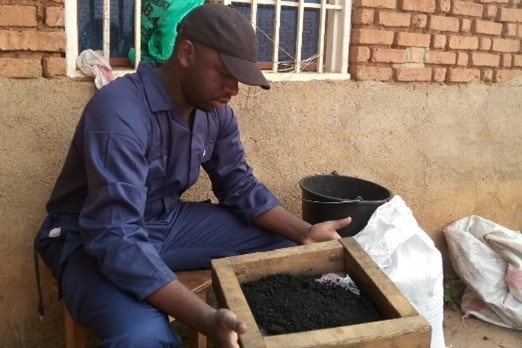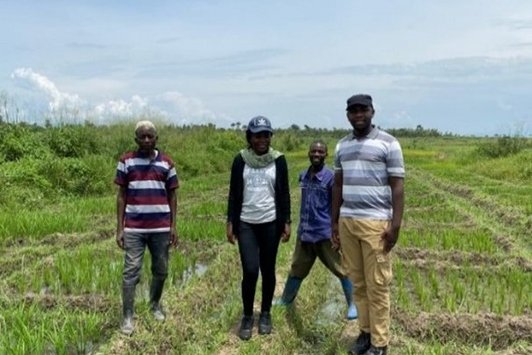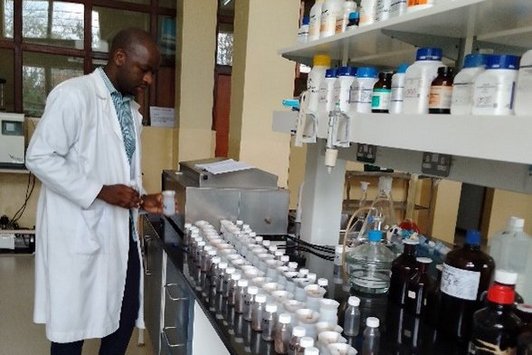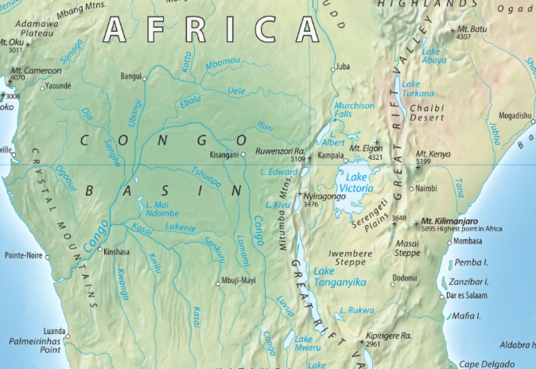
Project completed: P005_Kenya_DR Congo
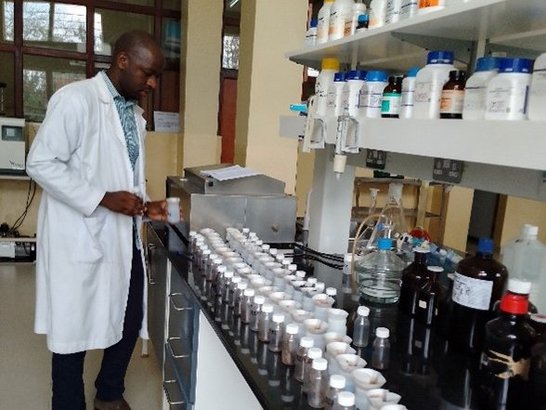
Nutrient management of paddy rice fields in South-Kivu, Democratic Republic of Congo – Using UAV-imaging for a precision agricultural approach
Cooperating countries: Kenya, DR Congo and Austria
Coordinating institution: Egerton University (Kenya), Assoc.Prof. Dr. Samuel Mutuku Mwonga, smwonga@egerton.ac.ke
Partner institutions: Université Catholique de Bukavu (DR Congo), University of Natural Resources and Life Sciences, Vienna (Austria)
Project duration: 1 August 2021 - 31 July 2023
Budget: EUR 29.254,80
Abstract:
Rice production in the South-Kivu province in the Democratic Republic of Congo does not meet local demand despite its enormous production potential. Sustainable increase in rice production requires efficient and environmentally-sound management practices and a baseline assessment of current agronomic practices. The main objective of this project is to assess the effect of nutrient management via biochar amendment on paddy rice yield and soil properties, by using and demonstrating the potential of unmanned aerial vehicle (UAV) imaging technology in precision agriculture. Experimental plots will be installed in the lowlands of the Ruzizi plain, applying three levels of biochar (0, 1 or 2 t ha-1) under alternating wetting and drying (AWD) water management regimes and considering the two most commonly cultivated rice varieties. The rice crop and soil responses to different management practises will be established through imaging using both UAV photogrammetry and spectroscopy approaches with RGB and multispectral (visible-infrared) cameras, respectively. Image-based analyses will be verified by ‘ground truth’ measurements on soils (carbon, nitrogen) and crops (nutrient status, phenology, and yield). Projected yield estimates under optimized management regimes will be scaled by modelling. Results will be disseminated to local and international shareholders. This study is of great importance in the South-Kivu province where the demand for rice keeps increasing but where limited studies have been conducted to improve sustainable paddy rice production. The applied study will therefore contribute to hunger and poverty reduction in the region and facilitate cross-border collaboration and capacity building in Sub-Saharan Africa—using a timely, digital approach to facilitate advanced agronomic techniques.
Summary:
Activity 1. Determining the effect of biochar/mineral fertilizer applied under contrasting watering schemes on paddy rice growth, yield, and profitability in the Phaeozems of the Ruzizi plain, South Kivu province, DRC
1.1. Methdology
A factorial experiment with a split-split plot arrangement and three replications was established to test the effect 24 treatment combinations on paddy rice growth and yield in three rice producing areas, namely Lubarika, Kiringye, and Luberizi. The main plot factors were two types of watering regimes: permanent flooding and alternate wetting and drying. The subplots consisted of 2 rice varieties (TAI and AR2017105) and sub-subplots were 6 levels of fertilization: control, rice husk biochar (BC), manure-charged rice husk biochar (MCBC), NPK, NPK + BC, NPK + MCBC. Biochar was locally produced using homemade pyrolysis reactors and applied only once, two weeks before the installation of the first season experiment. Mineral fertilizers NPK (102-25-51) were applied during two seasons of the study. Perforated PVC pipes (30 cm diameter, 40 cm long) were installed in the center of the sub-plots where AWD was applied to measure water depth and define the application and removal of water. Vegetative parameters considered in the study include: the number of tillers, the plant height, the leaf area. As for yield parameters, the number of panicles, the grain and biomass yield were considered. The value cost ratio (VCR) was used to determine the economic value of the fertilizers treatments.
1.2. Results
The findings indicated that the growth and yield of paddy rice were considerably enhanced by the combination of biochar and mineral fertilizers, as opposed to the use of mineral fertilizers exclusively or the unfertilized control. The combined analysis that considered all the sites revealed that the addition of NPK+BC and NPK+MCBC resulted in yield increases of 14.46% and 11.87% in comparison to NPK, and 78.62% and 74.58% in comparison to the unfertilized control, respectively. NPK+BC and NPK+MCBC also exhibited the highest growth and yield parameters, although in some cases no significant difference was found when comparing NPK to NPK+BC and NPK+MCBC, depending on the location. Alternate wetting and drying irrigation did not inhibit plant growth or decrease yield in all the sites but rather increase nitrogen uptake in Kiringye and Luberizi by 22.17% and 26.57%, respectively. Economic analysis showed that a value-cost ratio of 6.64 was observed for plots treated with a combination of NPK fertilizer and biochar during the second season (Season B 2022). This value-cost ratio was found to be higher than that obtained using conventional farming methods (6.2 on average).
Activity 2. Assessing the ability of UAV technologies in predicting paddy rice nitrogen uptake, aboveground biomass, and grain yield in the Ruzizi plain, South Kivu province, DRC
1.1. Methodology
To evaluate the accuracy of unmanned aerial vehicle (UAV) technologies in forecasting the biophysical properties of paddy rice, multispectral imaging data from UAVs was gathered during the stages of panicle initiation and rice tillering, which occurred 30 and 60 days subsequent to transplanting, respectively. After each UAV flight, destructive plant samples were collected, dried. The samples were analyzed at the Boku lab and used as ‘ground truth’ measurements to calibrate image-based data. Four types of UAV-based predictors namely; bands alone, vegetation indices (VIs) alone, VIs + Bands, and VIs + Bands + crop canopy and height features, as well as four modelling approaches; two tree-based models (Random Forest and Extremely Randomized Trees) and two linear-based models (Multiple Linear Regression and Support Vector Machine), were used in the analysis.
1.2. Results
The findings indicated that the rice panicle initiation stage yielded the most precise predictions, as evidenced by R2 values of 0.62, 0.65, and 0.75 for aboveground biomass, plant nitrogen uptake, and yield, respectively. In addition to NIR and green bands, the VARI, MCARI, and RVI indices, along with plant height and canopy data, were crucial in predicting paddy rice nitrogen uptake, aboveground biomass, and grain yield. Data collected by UAVs with multispectral capabilities also enabled the evaluation of variations in paddy rice intensification at the landscape and field scales.
Activity 3. Evaluating the impact of fertilizer treatments and watering schemes on Phaeozems soil properties in the Ruzizi plain, South Kivu province, DRC.
3.1. Methodology
In order to evaluate the impact of biochar on soil characteristics, soil samples were collected both prior to installing the first season and after the harvest of the second season. Prior to planting, three profiles were made, with one being conducted at each experimental site. Soil samples were obtained from each profile at three specific depths: 0-20 cm, 20-40 cm, and 40-60 cm. At each depth, samples were collected from five specific locations and then combined together. After the harvesting of the second season, a total of five sub-soil samples were collected from each plot at a depth of 0-20 cm. These samples were then thoroughly combined to create a single composite sample that accurately represents each individual plot.
A grand total of 225 soil samples were collected from the three study sites. After undergoing the process of air-drying, crushing, and sieving through a 2 mm sieve, the soil samples were analyzed chemically. Okalebo et al. (2002) procedures were used to determine the properties of soil including the physical characteristics such as texture and bulk density, as well as the chemical properties such as pH, organic carbon content, total nitrogen levels, available phosphorus levels, cation exchange capacity, and potassium content.
3.2. Results
The application of biochar, either on its own or in conjunction with mineral fertilizer, resulted in a significant improvement in the physico-chemical properties of Phaeozems soil, when compared to NPK alone or the unfertilized control. Overall patterns suggest a decline in soil bulk density and a rise in pH, cation exchange capacity, total nitrogen, total organic carbon, and available phosphorus in plots treated with biochar or a combination of biochar and mineral fertilizers.
Publications
Muhindo, D., Lelei, J. J., Munyahali, W., Cizungu, L., Doetterl, S., Wilken, F., Bagula, E., Okole, N., Rewald, B., & Mwonga, S. (2025). Paddy rice traits estimation under varying management strategies using UAV technology. Agrosystems, Geosciences & Environment, 8, e70047. https://doi.org/10.1002/agg2.70047
